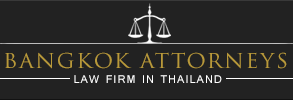

Superficies in Thailand. The right of superficies (in Thai, สิทธิเหนือพื้นดิน) is a statutory real right that separates ownership of buildings, structures or plantations from ownership of the land on which they stand. In practice it lets one person (the superficiary) hold legal title to structures built on another person’s land while the landowner retains ownership of the soil. Superficies is a powerful, statutory alternative to long leases that gives investors, developers and homeowners a clearer property interest while leaving land ownership intact.
Thai law codifies the right of superficies in Sections 1410–1416 of the Civil and Commercial Code. The statute says a landowner may create a right of superficies in favor of another person, giving that person ownership of buildings, structures or plantations upon or under the land. Superficies becomes a real right capable of third-party effect only when properly created in writing and registered at the Land Office on the relevant title deed. Without registration the arrangement remains a personal/contractual right that is weaker against third parties.
Two things are essential to get full protection:
a written agreement that creates the right of superficies, and
registration of that right in the Land Office against the land title (the land deed / chanote or other land document).
Once registered, the superficies is treated as an immovable real right attached to the land and thus binds subsequent purchasers, mortgagees and other third parties who search the register. Registration is therefore the single most important risk-mitigation step.
Under Thai practice, parties may grant superficies for a term (commonly up to 30 years) or for life of the superficiary, depending on the agreed wording and circumstances. The statutory scheme contemplates fixed-duration grants and also recognizes that the parties can contract on renewal terms. Many commercial investors will combine a long-term lease of the land with a registered superficies over the improvements to protect their capital investment and make the improvement marketable.
The superficiary, once registered, owns the structure and may transfer, mortgage or bequeath that right (subject to the agreement). The superficiary generally:
may sell or mortgage the building or improvement as a separate asset,
must respect the terms of the superficies agreement (maintenance, permitted uses, removal obligations), and
may be required to restore the land to its original condition if the contract so provides upon termination.
Importantly, the law protects the superficiary’s proprietary interest even if the structure is destroyed — the right itself does not automatically extinguish on destruction, although the parties’ contractual remedies will matter.
When the right of superficies ends (by expiry, mutual agreement or other contractual or statutory event), the law and typical contracts address what happens to the improvements. Usual outcomes are:
the superficiary removes the structures at its cost and restores the land, if the parties so agreed; or
the landowner may purchase the structures at market value, or otherwise keep them under agreed compensation terms.
Some statutory provisions and judicial decisions require the superficiary to remove improvements unless the landowner offers to purchase; specific contract wording and registration entries will determine priority. Because the outcome affects valuation, parties should draft exit mechanics carefully.
Superficies resembles a long lease in economic effect, but there are important distinctions:
Real right vs. personal contract: a registered superficies is a proprietary right, stronger than a mere contractual lease when dealing with third parties.
Transferability and collateral: the superficiary’s ownership of improvements can be sold or mortgaged separately from the land, which makes it easier to finance building-heavy projects.
Duration and certainty: while long leases are common, superficies often offers clearer statutory backup for ownership of the improvement itself.
Because foreigners cannot own land in Thailand (subject to limited exceptions), a registered superficies paired with a long-term land lease is a widely used structure for secure ownership of villas, commercial buildings and resort assets.
Draft the superficies agreement as a deed (signed, witnessed and translated where needed) and include detailed schedules: description of the land parcel (title number), exact description of improvements, permitted works and use restrictions.
Make registration a condition precedent to the superficiary’s obligations to pay major sums or commence works; insist on proof of Land Office annotation.
Define exit mechanics clearly: set the removal, purchase-price formula (market value) and restoration obligations in detail to avoid disputes on termination.
Consider mortgage and finance needs: if the superficiary plans to mortgage the improvement, confirm the bank accepts the structure and that the Land Office entries permit such encumbrance.
Coordinate with any land lease: where a lease and a superficies coexist, align their terms (duration, assignment consent, renovation rights) so the two instruments are mutually supportive rather than contradictory.
Failing to register: without Land Office registration the superficiary risk remains essentially contractual and vulnerable to third-party claims.
Ambiguous termination clauses: unclear obligations on removal or purchase of improvements lead to litigation; use precise, market-tested formulas.
Nominee and foreign-ownership traps: if foreigners try to disguise land control via nominee arrangements, regulators and courts may annul abusive structures; use a registered superficies plus legally compliant lease structures instead.
Title class issues: verify the land’s title class (chanote is best). Certain agricultural or restricted land types complicate long-term rights and conversions. Always commission a Land Office extract and an on-site survey.
Foreign owner of a villa or resort unit who needs a proprietary interest in the building while the land remains Thai-owned.
Developers building hotels or villas on third-party land who want to mortgage improvements separately.
Industrial or utility projects where a contractor builds infrastructure at a site owned by another entity and needs a proprietary security interest in the constructed assets.
In each case, pairing a registered superficies with careful banking, tax and title planning preserves value and supports financing.
